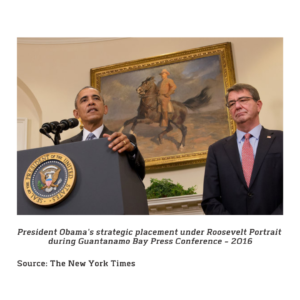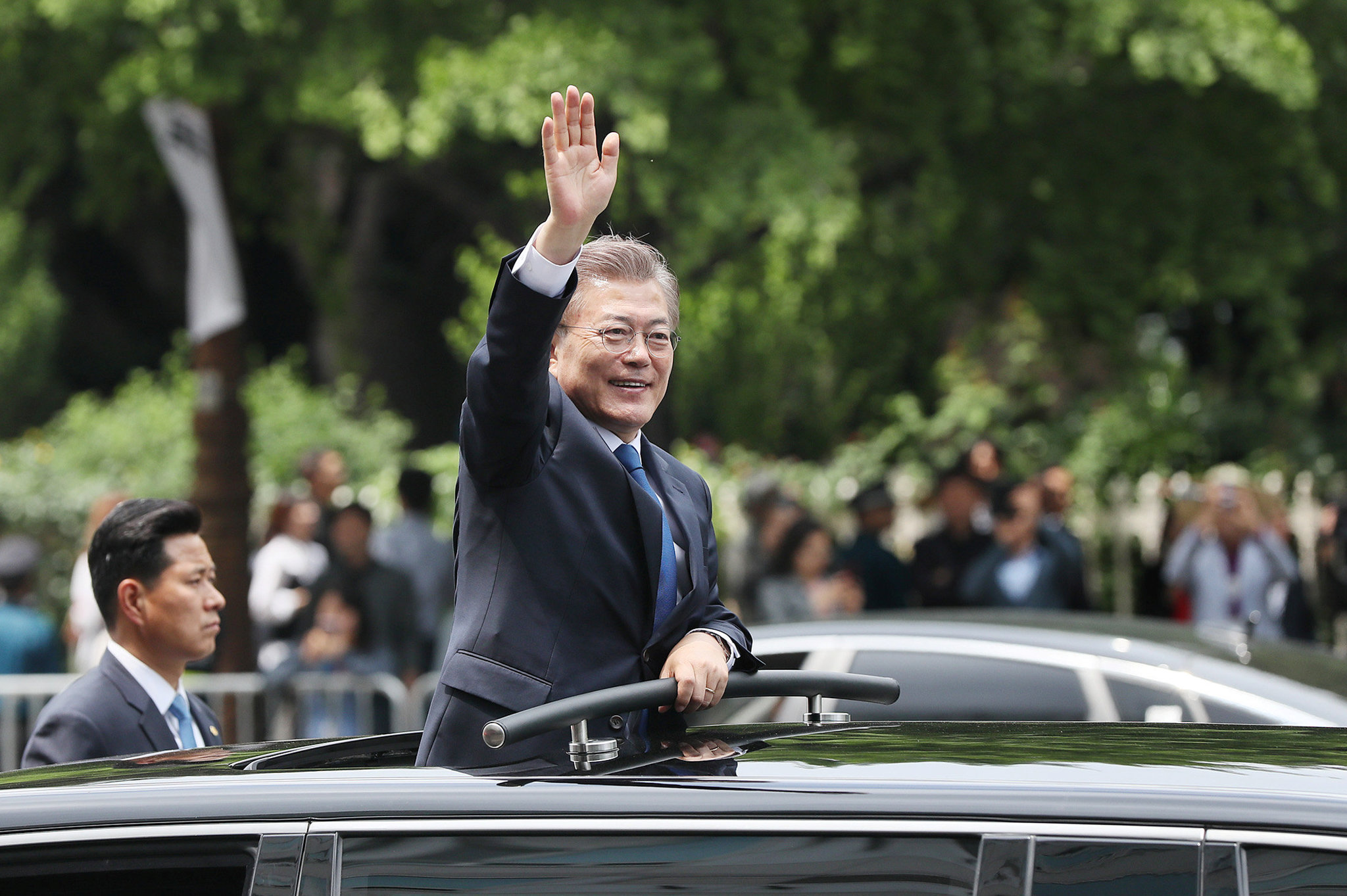Some images are etched into our mind as sacrosanct; irreversible and eternal. For instance, one cannot imagine the Dalai Lama in any other avatar than his iconic maroon and golden robes. Marilyn Monroe has always been reminisced as the vision in white; while even mere portraits bearing the Hitler Salute potentially takes one back to the shudders of World War II. Each of these images or mannerisms induce predictable emotions. Our garments, gestures and posture, culminate to form our cultural symbols or totems which not only depict our roots, rather embolden our heritage, ideologies and eventually our political narrative. Eminent leaders world-over recognize the power of cultural symbolism and strive to apply it effectively in their political propaganda.
Psychologists purport that the human mind assimilates information categorically on the basis of our mental “schema” which is a robust cognitive framework built through years of cultural socialization and personal experience. Symbols or totems that represent our cultural identity; prove to be multi-vocal in nature, harbouring different meanings to different people based on the blueprint of one’s own cognitive schema. American anthropologist Clifford Geertz reckons that humans are in need of symbolic “sources of illumination” to orient themselves with respect to the system of meaning that lies in any particular culture. Victor Turner, on the other hand, views symbols as agents initiating social action and regards them as “determinable influences inclining persons and groups to action”.
As we sail through the sea of life; our nurturance and upbringing, in tandem with specific cultural norms shape our distinct set of morals and principles; which guide our actions like a navigating compass mid-voyage. They define our emotional responses to surrounding information. Some of these principles also rise up to form a universal code of conduct across cultures. While each person is unique, the attributes of conforming to the ethnic values conventional to one’s own social groups or communities render us to emote in predictable patterns. It wouldn’t come off as an utter surprise to see homogeneous reactions of respect and gratitude towards motherhood, or rage and detest towards oppression, across people and cultures. What’s even more interesting is, we may even share quintessential methods of expressing them. Thus, when presented with visual symbols as cultural totems, each community will have typical standards of evaluating and responding to them; which can become the unifying thread to stimulate crowd congruence. Since this congruence is on the basis of emotional integration, the crowd in question becomes highly susceptible and volatile to external suggestion. Voila ! An excitable army of devout followers is created with precision for a Leader to enforce their reign.
History has witnessed countless dynamic political leaders ‘tactfully’ applying cultural appropriation and symbolic totems to harness public solidarity towards their cause. The Swastika; once a modest metaphor for prosperity in Hindu ideology, potentially changed the course of time in Hitler’s regime. Interestingly, this skill set of evoking strong sentiments to fuel crowd dynamism no longer just a Ghost of the Nazi Past!

Visual Culture & Subliminal Messages
Visual culture regards imagery as central to the representation of meaning in our world. The advertising industry effectively applies unique combinations of audio-visual signals to elicit consumer drives to be penetrated to deeper levels of consciousness through a technique known as subliminal messaging. With the world-wide-web equipped with robust digital platforms of news feeders, external imagery is also discreetly used to enhance a leader’s aura in the context of their crusade or cause. In the year 2000, George Bush’s election campaign was accused of subliminally embedding the word “RATS” in big font; derived from the last half of the word “Bureaucrats” while all other alphabets remained in smaller text size; thereby creating a distinct figure-ground perceptual field when flashed at 26 seconds into the campaign advertisement.

Another classic instance of this is ex-American president Barack Obama’s decision to hold an official press conference announcing his determination to permanently close Guantanamo, right in front of the portrait of Obama’s former predecessor, president Theodore Roosevelt. What’s most intriguing about this calculated move is that Roosevelt, who in 1898 led a legendary cavalry of so-called “Rough Riders” to victory against Spanish overlords in Cuba, had in fact helped establish US control over Guantanamo Bay. Obama’s strategic visual placement alongside a heroic portrait of the galloping leader Roosevelt, has been scrutinized by several experts globally. Additionally, control exerted by leaders in media houses is no mystery in today’s news hungry world. With the emergence of several private players in the market, media no-longer appears to be the independent fourth-estate it once aspired to be.

Role of Fashion & Body Language
As garments envelope us, with each intricate thread, they weave themselves to form the core of our identity, chiselling and shaping ‘what’ we represent. Dash of specific colours worshipped as ‘scared’ over a few others shunned in the garb of bad omen; when styled appropriately with accessories symbolizing our roots, they embolden our heritage, culture, ideologies and eventually our political narrative.
Fashion & body language experts for years have scrutinized eminent leaders’ wardrobes, public appearances and demeanour unravelling several political insights. Princess Diana’s wardrobe for instance, is recounted to have brought in an air of rebellion to years of traditional monarchical customs. The people related to her through her exquisite art of applying sharp emotional intelligence and apt use of fashion. During her visit to Saudi Arabia, she wore a dress emblazoned with gold falcons- the emblem of the kingdom which is endorsed as a chessboard move of sartorial diplomacy that has echoed through the wardrobes of first ladies and royals since. “If she was visiting a hospital for blind people, she would wear velvet so that she would feel warm and tactile,” as remarked by Eleri Lynn, the curator of the 2017 exhibition at the National Museum of Wales, United Kingdom.

In today’s time we have American Vice President Kamala Harris reminiscing her “Indian Chittis (word for aunties in Tamil)” during her victory speech; Rep. Alexandria Ocasio-Cortez (D-NY) who flaunts her signature red lipstick as an ode to her Puerto Rican roots, Prime Minister of New Zealand Jacinda Ardern donning a hijab in solidarity with the victims of the tragic mosque massacre; along with other world leaders like Canadian Prime Minister Justin Trudeau and the South Korean President Moon Jae celebrating Indian attires during their official visits to India.

Thus, it proves to be quite effective for eminent political leaders to employ the right set of “politically correct & culturally appropriate” set of totems in their own person, through fashion and specific gestures; thereby reflecting the same sentiments that were imbibed from their own target groups. The crowds emotionally resonate with these select unifying symbolisms that are constantly reiterated through the media exposure of the Leader himself; which eventually catalyse into favourable voting behaviour. Politicians in India for instance, prefer to clad themselves in white during election rallies, to demonstrate purity of heart, sanctity of mind and to elicit the implicit recall of Stalwarts like Gandhi and Nehru who often dressed in white themselves.
The Dark Side of Cultural Imagery
All is fair in love & war, until extreme forms of cultural imagery are injected into this Socio-Political game. This could prove to be lethal for our aspirations of a world of free-will and culminate into a doomsday of fascism. Fashion has been hand-in-glove in our cruel history of forceful dissection of societies as “us” and “them”. The Jewish skullcaps, Jippi-Jappa hats of the African American slaves in the plantation, all had served as a basis of social exclusion or subjugation. Post the events of the 9/11 attack, stemming from an inexplicable intensity of Islamic hate, Hijabs, Burqa and beard came to be viewed as clothing of hostility or primitiveness. Crude ethnocentrism of leaders, hero worship of their own cultural totems, with a disregard to appreciate that of others, coupled with legal enforcement of dogmatic policies could ultimately result in a strong aversion to cultural expression. Today, several societies are even at the brink of considering a world bereft of religion or culture in an attempt to establish egalitarian inclusivity.
In Conclusion…
This is just the tip of the Iceberg! Unravelling the enigma of media nuances and cultural symbolism has ever more relevance in today’s rapidly-changing dynamic world of woke, opinionated, strong and driven voter audiences. The field of geo-political analysis and political psychology is thriving with the potential to provide us with new dimensions of analysing voting behaviour in elections. So, the next time you find yourself inadvertently drawn to a political leader featured on your flat screen, sit back and probe yourself; “What is it about them that I am drawn to?”. Is it the way they carry their hair? The choice of color palette in their wardrobe? Familiarity of their accent with your hometown, especially when their speech pertains to your cause? Is it their gait, gestures or body language? The Venue or backdrop of the Media Event? I am sure, your answers to most of these questions will leave you intrigued…
******************************






